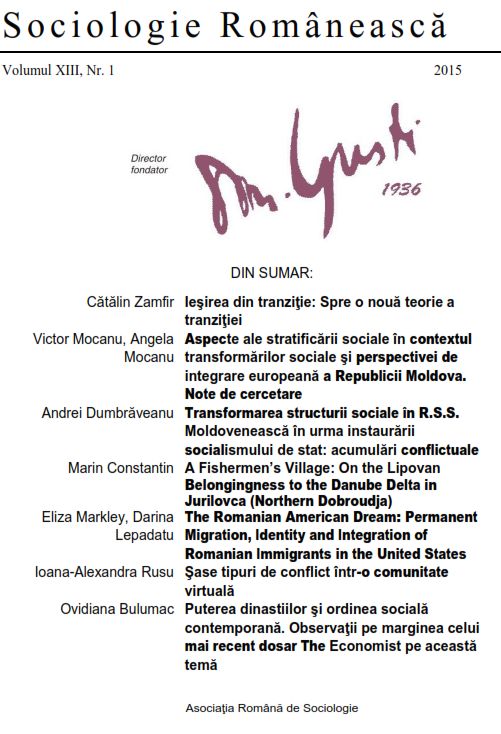Author(s): Andrei Dumbrăveanu / Language(s): Romanian
Issue: 01/2015
The Bessarabia’s occupation in 1940 by the Red Army and the incorporation of territory between the Prut and Nistru into the U.S.S.R. under the new name of Soviet Socialist Republic produced radical changes in the lifestyle of the population and completely transformed the class structure formed during the formation of the modern Romanian state. In order to change the Moldovan society, the new Communist regime applied Stalinist dictatorship mechanisms, the most diabolical political and social operations. The most significant were the deportations. The first wave occurred in the 12 to 13 June 1941 and included landowners,merchants, mayors, policemen and gendarmes, white guardsmen, refugees from U.S.S.R. Between 30,000 and32,500 people were deported. In 1945 were deported 1,207 “Germans”, while in 1946-1949 were arrested and deported the “fascist accomplices and supporters, policemen, gendarmes, vlasovite” – a total of 2,482people. The second wave took place from June 5 to 6, 1949 and included: kulaks, former landowners, traders,members of political parties, accomplices of German occupiers, white guardsmen, members of sects deemed illegal, along with their families. 35,796 people were deported. The third wave occurred from March 31-April1, 1951, and targeted the members of the religious sect Jehovah’s Witnesses. 2,671 people were deported.According to calculations based on data of the Interior Ministry, a total of 74,000 people were deported to which we should add 23,978 people recently identified in the archives of the Intelligence and Security Service.In total until 1952 they were repressed about 100,000 inhabitants of M.S.S.R. In 1947 the Communists organized the massacre of the population by starvation, and about 280,000 people died of hunger. Stalinist reprisals which included executions, deportations, sentences to excessively many years in prison, and starving to death affected about 20% of the country’s population. Massive deportations and starvation caused a massive longterm social impact and speed up the collectivization in the countryside. Following the events in November1949, the percent of those who entered into kolkhoz farms share increased from 32% to 97%. The mechanisms and instruments of Communist/Bolshevik terror conduced to the destructuration of Bessarabian society formed until 1940. The M.S.S.R. class structure is established on the principles of state socialism dictatorship.The new social class structures contain the sources of cumulative latent conflicts.
More...











